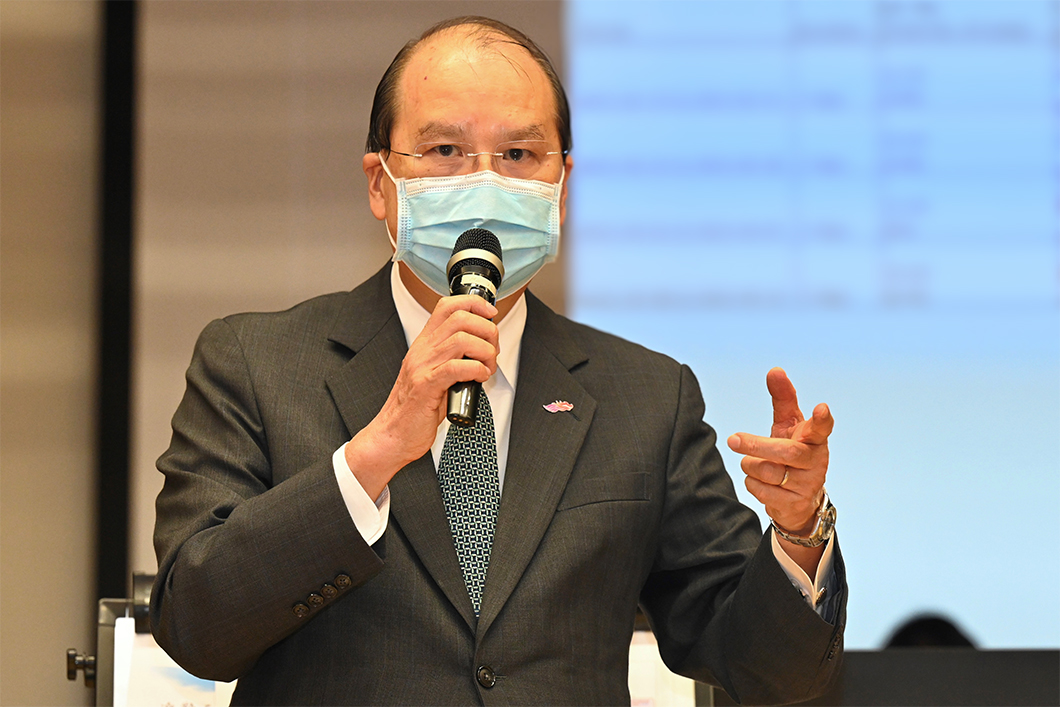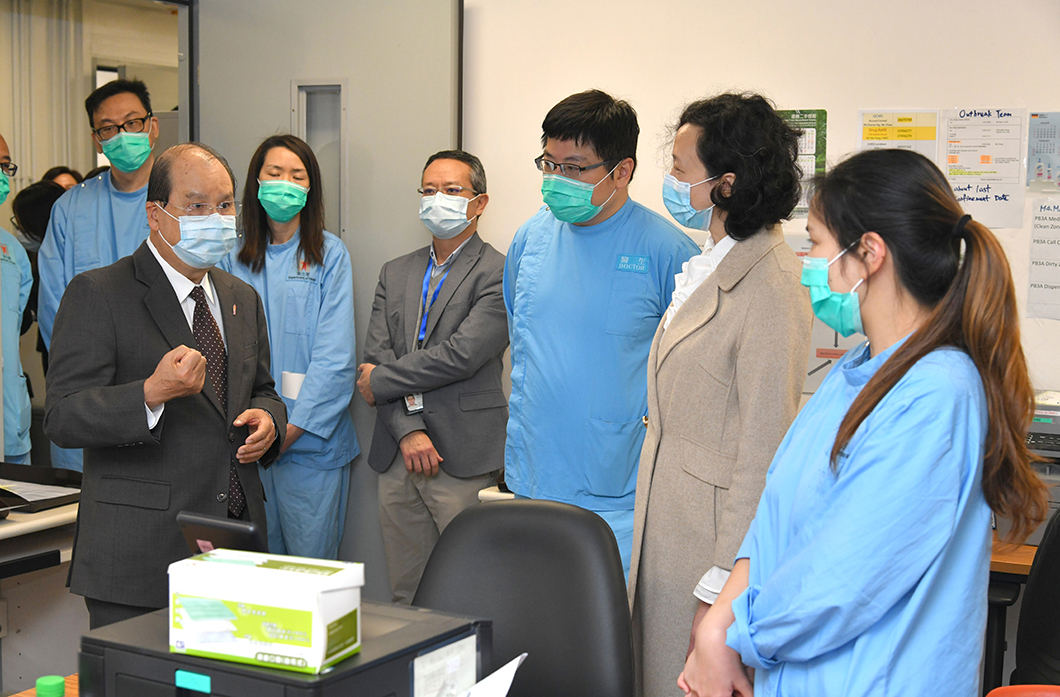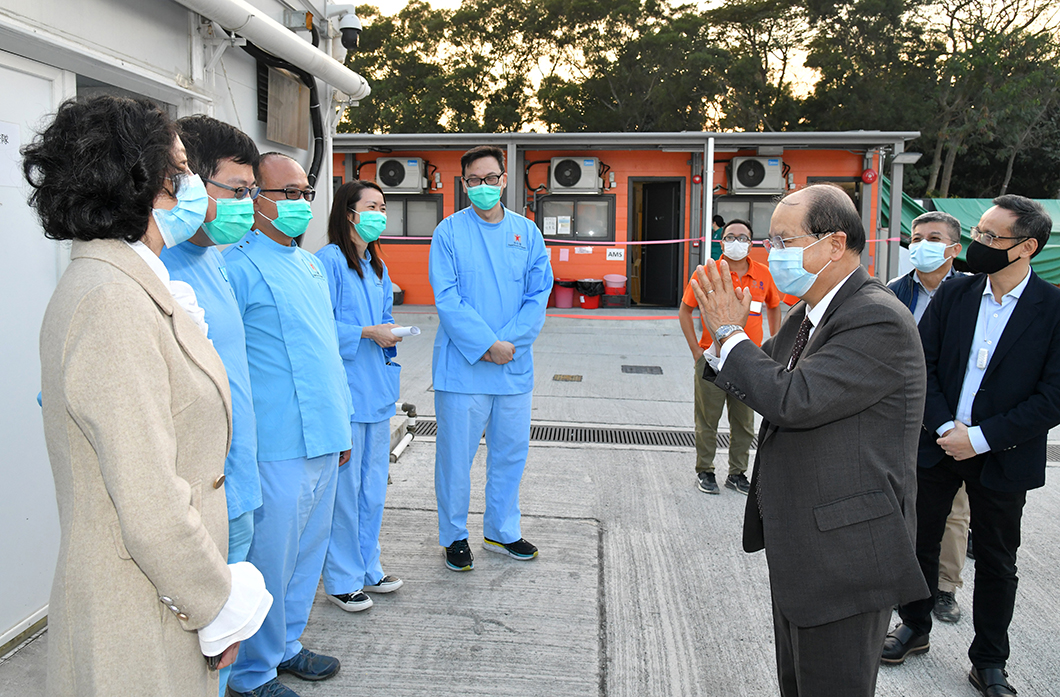Improve medical services without further ado
23 May 2021
Hong Kong is facing a serious shortage of doctors. Our public healthcare system has been overloaded for years and the waiting time for specialty services is fairly long, which may exceed two years for some of those in heavy demand. Healthcare workers are overstretched and the quality of healthcare services has been compromised. The Government cannot turn a blind eye to such an undesirable situation.
To tackle the manpower shortage problem, the Government will introduce the Medical Registration (Amendment) Bill 2021 (the Bill) into the Legislative Council (LegCo) on June 2 to create a new pathway for admission of qualified non-locally trained doctors who are Hong Kong permanent residents to practise in Hong Kong, and is looking forward to the full support of the LegCo and all sectors in society.
Increasing demand for public healthcare services
The shortage of doctors is particularly evident in the public healthcare sector. In 2020, there was a total shortfall of 710 specialists and specialists-to-be in the Hospital Authority (HA) and the Department of Health (DH).
In 2020-21, the HA recorded 7.47 million specialist outpatient attendances, an increase of about 0.84 million attendances over the year 2010-11 a decade ago. The number of patient days (including in-patient and day in-patient services) also increased from 7.66 million days ten years ago to 8.2 million days in 2020-21. The waiting time for routine cases in the specialties under pressure (e.g. Medicine and Ophthalmology) is over two years. As for the DH, there is a shortage of ten specialists (40% vacancy rate) in the Child Assessment Service. In 2020, child assessment was completed within six months for around 65% of the new cases, which was far below the target of 90%. The situation is indeed worrying.
With a rapidly ageing population and an ever-increasing demand for public healthcare services, the shortage of doctors is a problem that must be resolved, otherwise the general public, especially the grassroots and the elderly, will eventually suffer.
Severe shortage of doctors
It is an irrefutable fact that there is a shortage of doctors in Hong Kong. We have a per capita doctor ratio of two doctors per 1 000 people, which is far below that of other advanced economies including Singapore (2.5), Japan (2.5), the United States (2.6), the United Kingdom (3.0) and Australia (3.8).
According to the Healthcare Manpower Projection 2020 conducted by the Food and Health Bureau (with 2017 as the base year for projection), there will be a continuous shortage of doctors in the long term in the light of the projection of healthcare needs with regard to demographic changes. The projected shortfall of doctors in 2030 and 2040 will be 1 610 and 1 949 respectively.
Problem cannot be resolved by local training alone
Despite the Government’s sustained efforts to increase the number of medical training places of the two local medical schools over the past decade, this measure alone is not enough for resolving the manpower problem due to the long time required for training a doctor and the constraints in enhancing the training capacity of the medical schools. Hence we see the need to consider admitting more qualified non-locally trained doctors. From 1991 to 2000, a total of 2 224 non-locally trained doctors were registered in Hong Kong, accounting for 45% of the 4 950 newly registered doctors. However, there were only 366 and 396 non-locally trained doctors registered in Hong Kong during the periods 2001 to 2010 and 2011 to 2020 respectively.
Therefore, the Government sees an imminent case to create a new pathway for qualified non-locally trained doctors to obtain full registration in Hong Kong as an alternative to the current pathway of passing the Licensing Examination, subject to certain criteria being met.
A multi-pronged approach to improve public healthcare services
Manpower of doctors is only one of the challenges confronting the public healthcare sector. To improve public healthcare services, some structural issues will need to be addressed. In this connection, the HKSAR Government has implemented and will continue to pursue various enhancement measures, including:
- retaining HA doctors by, among others, implementing the Retired and Rehire Scheme, recruiting part-time doctors and providing more promotion and training opportunities;
- promoting Public-Private Partnership programmes so as to tap into the capacity of the private healthcare sector, thereby alleviating the pressure on the public healthcare sector;
- upgrading hardware facilities by implementing the two Ten-year Hospital Development Plans (Ten-year HDPs) to provide additional hospital beds; and
- promoting primary healthcare and strengthening co-ordination among various professions, sectors and organisations in the area with a view to alleviating the pressure on public hospitals.
However, without sufficient doctors, none of the service enhancements can be achieved. In the long run, the passage and implementation of the Bill will be advantageous. The new pathway, i.e. special registration, will attract more qualified non-locally trained doctors to return to and practise in Hong Kong. This will increase the manpower of doctors in the public healthcare system, thereby enhancing healthcare quality and efficiency, reducing the waiting time for healthcare services and relieving the work pressure of doctors.
Ten-year HDP: Progress made
The Government and the HA commenced implementation of the first Ten-year HDP in 2016, for which $200 billion was earmarked for a total of 16 projects to provide over 6 000 additional hospital beds and 94 additional operating theatres as well as increase the capacity of specialist out-patient clinics and general out-patient clinics.
To date, the Government has upgraded 14 projects under the first Ten-year HDP in full or in part to Category A with a total commitment of over $70.1 billion, or 35.1% of the $200 billion. We plan to seek funding approval for three hospital projects, viz. construction of a new acute hospital at Kai Tak Development Area, site formation and foundation works for the expansion of North District Hospital and site formation and foundation works for the expansion of Lai King Building in Princess Margaret Hospital, in the second quarter of this year. Subject to the approval of the three proposed hospital projects by the LegCo Finance Committee, the cumulative commitment approved would amount to over $109.5 billion, or 54.8% of the $200 billion.
Planning for the second Ten-year HDP
To expedite hospital development in the future, the Chief Executive announced in the 2018 Policy Address that the HA had been invited to commence planning for the second Ten-year HDP in the next ten-year cycle (2026 to 2035). For a budget of $270 billion, the second Ten-year HDP covers a total of 19 projects, including the development of new hospitals and a Community Health Centre as well as the redevelopment or expansion of existing hospitals1. Upon completion, there will be a planned capacity of over 9 000 additional beds and other additional hospital facilities that will largely meet the projected service demand up to 2036. HA’s planning work will commence progressively.
The two Ten-year HDPs can provide more certainty for resource planning, facilitating the development and implementation of various hospital projects as well as the HA’s early planning and action on manpower supply and other healthcare resources.
Conclusion
The HKSAR Government is committed to enhancing the healthcare system and services in Hong Kong by forward planning, with a view to developing an appropriately balanced, robust and sustainable healthcare system. Nevertheless, the upgrading of hardware and software in the system must be complemented with adequate healthcare manpower. Therefore, increasing the manpower of doctors in the short, medium and long term is a matter of importance, necessity and urgency. After all, it concerns people’s medical needs as well as the well-being of patients and the wider community. I hope that all sectors of the community, including various medical associations, will consider the issue of doctor shortage in an objective, rational and pragmatic manner to enable qualified non-locally trained doctors who are Hong Kong permanent residents to practise in Hong Kong in the overall interest of the society.
1The 19 projects under the second Ten-year HDP include the construction of new hospitals at King’s Park Site and in Hung Shui Kiu New Development Area; the redevelopment or expansion of Pamela Youde Nethersole Eastern Hospital, Grantham Hospital, Queen Mary Hospital, Tseung Kwan O Hospital, United Christian Hospital, Haven of Hope Hospital, Wong Tai Sin Hospital, Princess Margaret Hospital, Caritas Medical Centre, North Lantau Hospital, Yan Chai Hospital, Prince of Wales Hospital, Tai Po Hospital/Alice Ho Miu Ling Nethersole Hospital, Tuen Mun Hospital, Tin Shui Wai Hospital and Pok Oi Hospital; and the construction of a Community Health Centre in Yuen Long.




